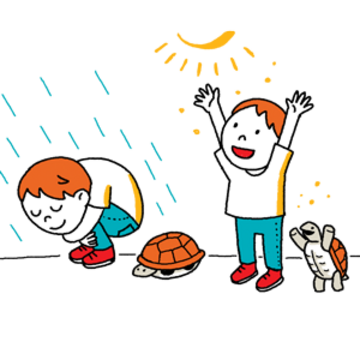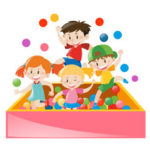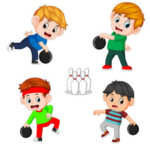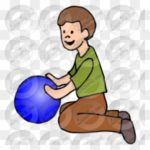
by Neetu | May 28, 2021 | Manthan
Learning Outcome
Exploring walking through space in different levels and directions, using different body parts and at different speeds and flow.
Activity Description
Ask ‘Can you walk …?’ (or Who can walk …?)
forward, backward, sideways, diagonally
slow/fast
tall, small, middle-height
on toes/heels
with small/long steps
in a circle, in a zigzag, on a line
as if you are in the rain, a strong wind, in the dark
fast over a short distance
like a fashion model/soldier
changing direction on signal
in a straight line, curved line
making shapes, letters, numbers, words
with your elbow/head/seat leading
in funny ways – who is the funniest?
Required Material

by Neetu | May 28, 2021 | Manthan
Learning Outcome
This activity develops coordination and balance.
Activity Description
Have your child balance a bean bag on the head while walking along a balance beam, a length of rope, or along a line marked out on the ground.
Increase the challenge by asking your kids to keep the bean bag on their heads while:
doing a heel-toe walk
walking around obstacles
lowering the body to touch an object on the ground!
Required Material
4 Boundary cone, Bean bag

by Neetu | May 28, 2021 | Manthan
Learning Outcome
Learn how a “kangaroo” looks like when it is jumping and sitting on the ground.
Activity Description
Demonstrate to children what a “kangaroo” looks like when it is jumping and what it might look like when it is still.
Have all children stand up and show you their “kangaroo” jumping.
When the teacher starts the music, the game begins. If I stop the music, everyone has to freeze like a kangaroo.
Change who is “it” every 60 seconds
Participate yourself to provide an example for children who might need help.
Students should understand the difference between a two-foot take-off (jump) and using one foot (hop).
The teacher tells the students to move around general space while using a certain locomotor skill when the music begins. (Walking is a good method to use at first to control the speed of movement in general space.) When the music stops, the students will stand on the closest spot.
At this time, the instructor gives them a jumping or hopping task to perform. After about 15 seconds, begin the music again. Be sure to reinforce which type of locomotor movement the students may use during the music time.
Examples of jumping/hopping tasks:
1) Jump on and off the spot.
2) Hop on and off the spot.
3) Jump side to side over the spot.
4) Hop around the spot.
5) Jump forward and backward over the spot.
6) Hop around the spot.
7) Straddle jumps the spot. (Both feet on, and both feet off.)
8) In a straddle position, jump side-to-side changing which foot lands on the spot.
9) Jump up in the air in a straddle jump and land with both feet on the spot.
Required Material
4 Boundary cone

by Neetu | May 28, 2021 | Manthan
Learning Outcome
How to find personal space with the help of bubble
Activity Description
Ask the children to stand up and spread out so they are not touching anything at home.
Ask the children to imitate you as you demonstrate the following skills:
Jump up and down
Jump side to side
Hop (on one foot at a time, alternate left-right
Walk at different speeds, directions, and patterns (shapes, zigzag, etc.)
Skip (step, hop, step, hop…)
Required Material
4 Boundary cone

by Neetu | May 28, 2021 | Manthan
Learning Outcome
This activity develops coordination of legs, arms, and torso, plus dynamic balance. These skills transfer to sports and activities that involve dynamic balance and coordination for lifting and lowering objects (e.g., weightlifting as a sport, and all daily lifting activities in general, plus combative sports such as wrestling and judo)
Activity Description- Imaginary Activity
Go with your toddler for a walk in a natural space (beach, forest, park, etc.).
Encourage your toddler to find interesting things to pick up and investigate (e.g. stones, sticks, leaves)
Watch to ensure your toddler does not pick up anything unsafe.
TIP: This simple activity develops balance and coordination in bending down to pick things up.
Variations
• In your home, encourage your toddler to help you in activities where you are picking up things around the house
• Picking up books and putting them on a shelf
• Picking up toys and putting them away
• Picking up clothes for the laundry
Required Material
4 Boundary cone, Toys.












